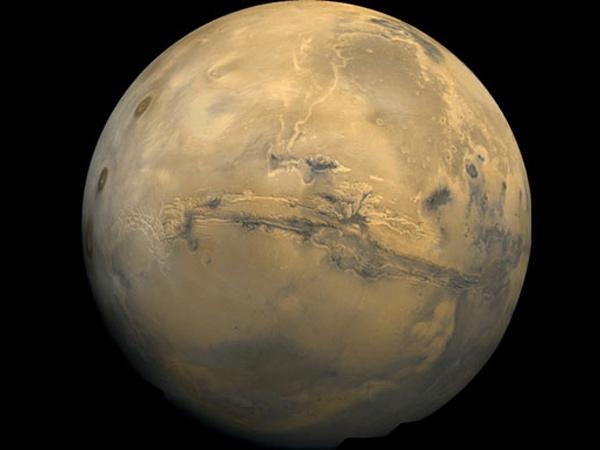 Aug 15, 2011; 1:10 PM ET
Aug 15, 2011; 1:10 PM ET
Observations from NASA’s Mars Reconnaissance Orbiter have revealed possible flowing water during the warmest months on Mars.
“NASA’s Mars Exploration Program keeps bringing us closer to determining whether the Red Planet could harbor life in some form,” NASA Administrator Charles Bolden said, “and it reaffirms Mars as an important future destination for human exploration.”
Dark, finger-like features appear and extend down some Martian slopes during late spring through summer, fade in winter, and return during the next spring. Repeated observations have tracked the seasonal changes in these recurring features on several steep slopes in the middle latitudes of Mars’ southern hemisphere.
“The best explanation for these observations so far is the flow of briny water,” said Alfred McEwen of the University of Arizona, Tucson. McEwen is the principal investigator for the orbiter’s High Resolution Imaging Science Experiment (HiRISE) and lead author of a report about the recurring flows published in Thursday’s edition of the journal Science.
Some aspects of the observations still puzzle researchers, but flows of liquid brine fit the features’ characteristics better than alternate hypotheses. Saltiness lowers the freezing temperature of water. Sites with active flows get warm enough, even in the shallow subsurface, to sustain liquid water that is about as salty as Earth’s oceans, while pure water would freeze at the observed temperatures.
“These dark lineations are different from other types of features on Martian slopes,” said Mars Reconnaissance Orbiter Project Scientist Richard Zurek of NASA’s Jet Propulsion Laboratory in Pasadena, Calif. “Repeated observations show they extend ever farther downhill with time during the warm season.”
The features imaged are only about 0.5 to 5 yards or meters wide, with lengths up to hundreds of yards. The width is much narrower than previously reported gullies on Martian slopes. However, some of those locations display more than 1,000 individual flows. Also, while gullies are abundant on cold, pole-facing slopes, these dark flows are on warmer, equator-facing slopes.
The images show flows lengthen and darken on rocky equator-facing slopes from late spring to early fall. The seasonality, latitude distribution and brightness changes suggest a volatile material is involved, but there is no direct detection of one. The settings are too warm for carbon-dioxide frost and, at some sites, too cold for pure water. This suggests the action of brines, which have lower freezing points. Salt deposits over much of Mars indicate brines were abundant in Mars’ past. These recent observations suggest brines still may form near the surface today in limited times and places.
Please join the AccuWeather.com Astronomy fanpage by clicking here. You can leave your comments there, as well, and be part of a community where discussions on this or any other astronomy subject take place. We are now over 1,750 likes on Facebook and recently the growth has been rapid. With your help we will get to 2,000 soon. Tell your friends about this site and blog and weigh in on some exciting issues. We encourage open discussion and will never criticize any idea, and no negative conversation will be allowed.
